

Electric Fields
Electric Field: A Numerical Example We have looked at Coulomb's Law, the definition of the electric field, and applied that to find the electric field due to a point charge. Now we turn to an example with more than a single point charge.
With three point charges q1, q2, and q3 located as shown in the diagram below, what is the electric field E at point P?
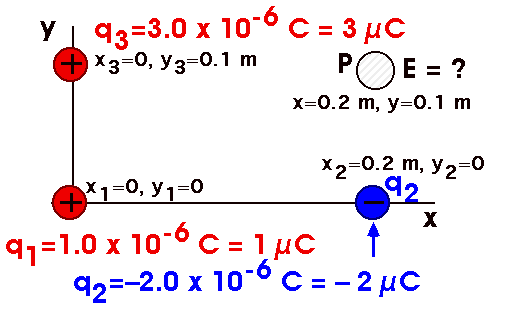
With three point charges q1, q2, and q3 located as shown in the diagram above, what is the electric field E at point P? There is not necessarily any charge at point P. An electric field E at point P (or any other point) means that _if_ a "test charge" q is brought to that point, that "test charge" q will find a force F that is given by F = E q.
We know how to find the electric field caused by a single point charge. We will find the electric field E1 caused by charge q1, the electric field E2 caused by charge q2, and the electric field E3 caused by charge q3. The net electric field Enet is the _vector_ sum of these three fields,
Remember, tho', this is true only as a vector equation!
Start with E1, the electric field caused by charge q1,
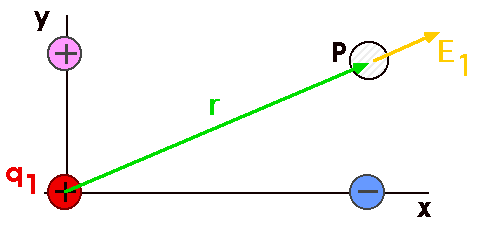

Remember, this is a vector addition problem so we will need the vector components of all the electric fields.


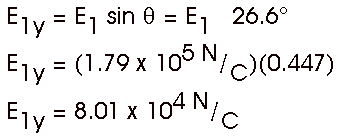
Now we turn our attention to E2, the electric field caused by charge q2,
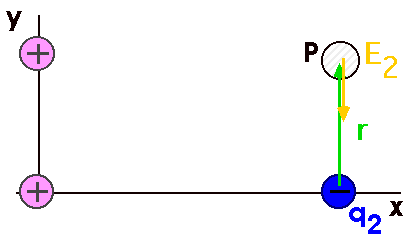

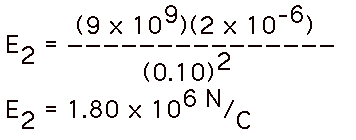
Now we turn our attention to E3, the electric field caused by charge q3,


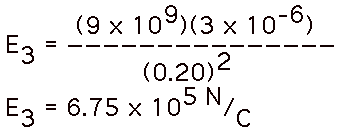
Now we've done all the hard work.
All that remains it to put the pieces together. It is just another vector addition problem.
Don't forget, however, that it _is_ a vector problem!

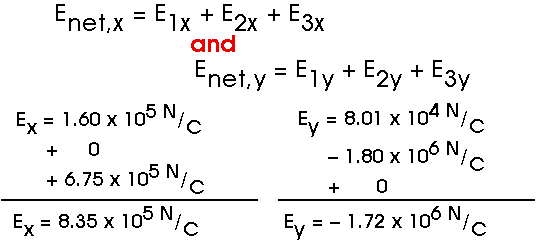
We're almost done!
Now we need to find the magnitude of the electric field and its direction.
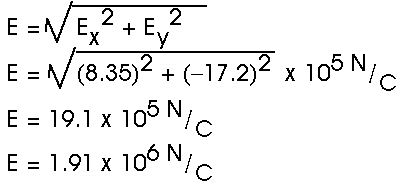

(c) Doug Davis, 2002; all rights reserved

Return to Ch 23 ToC